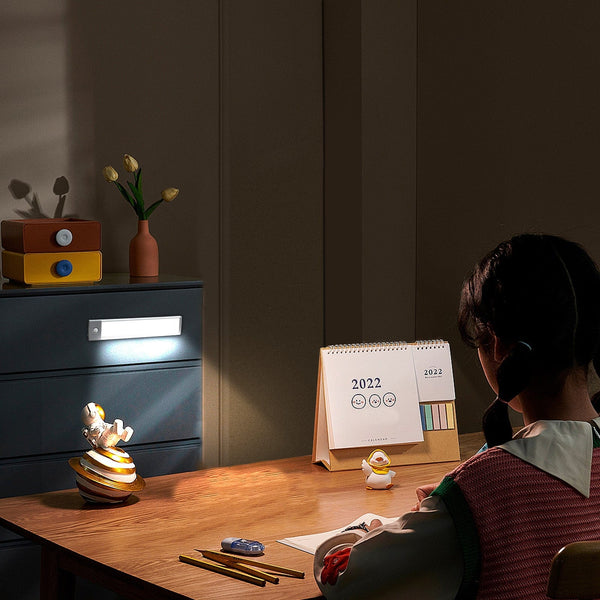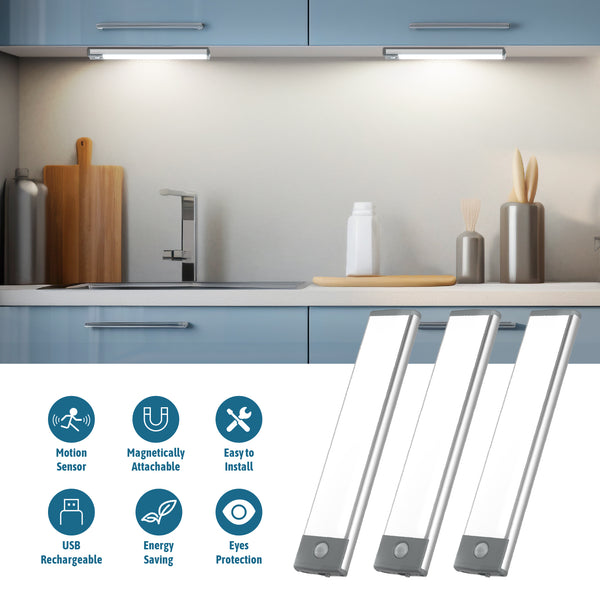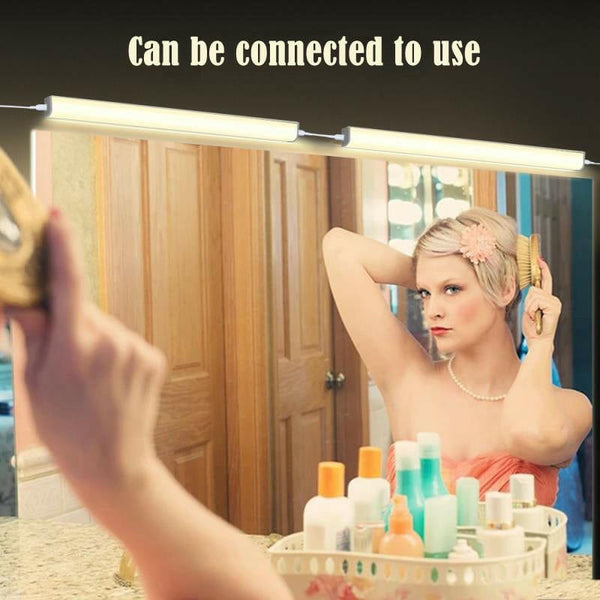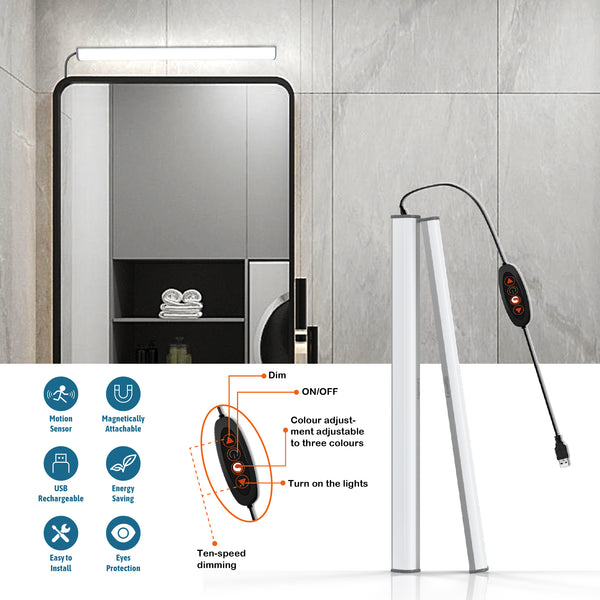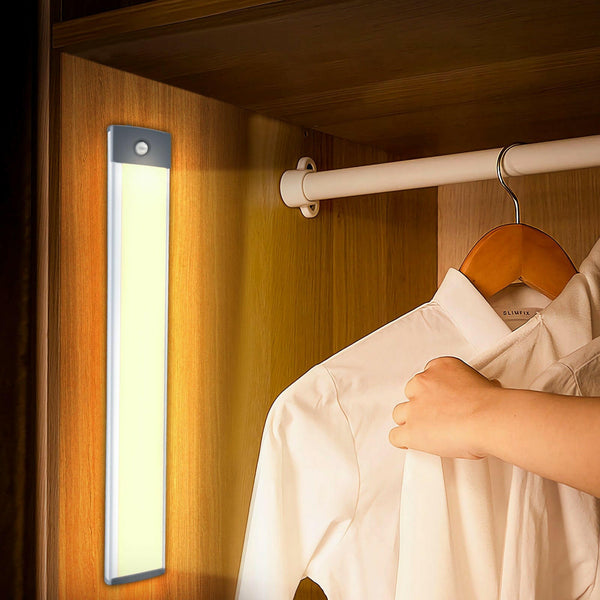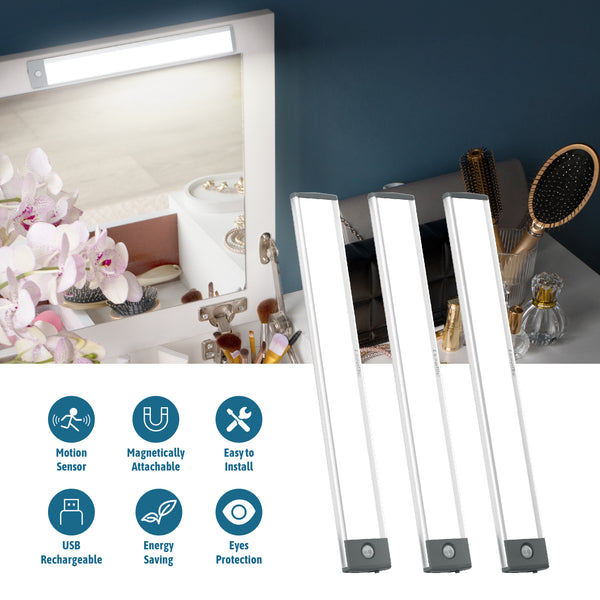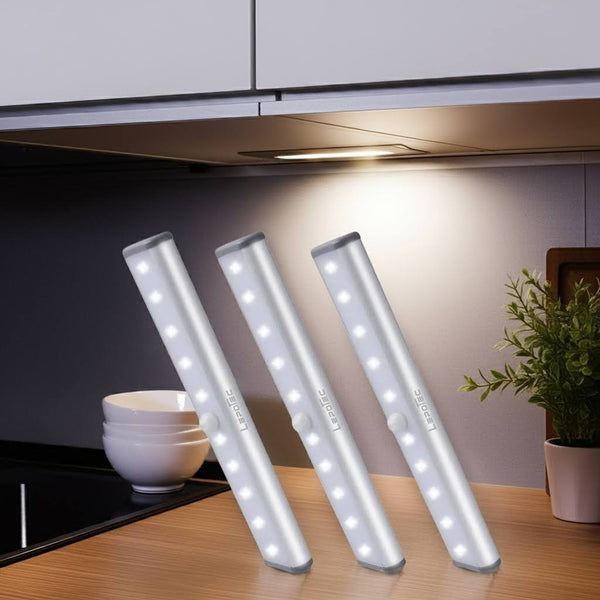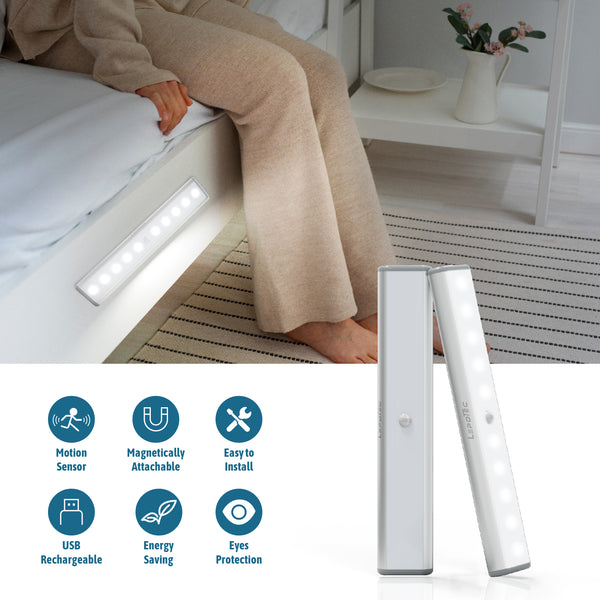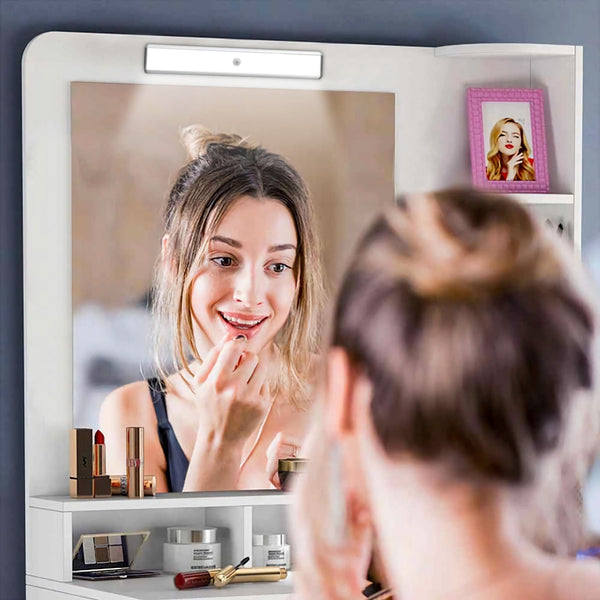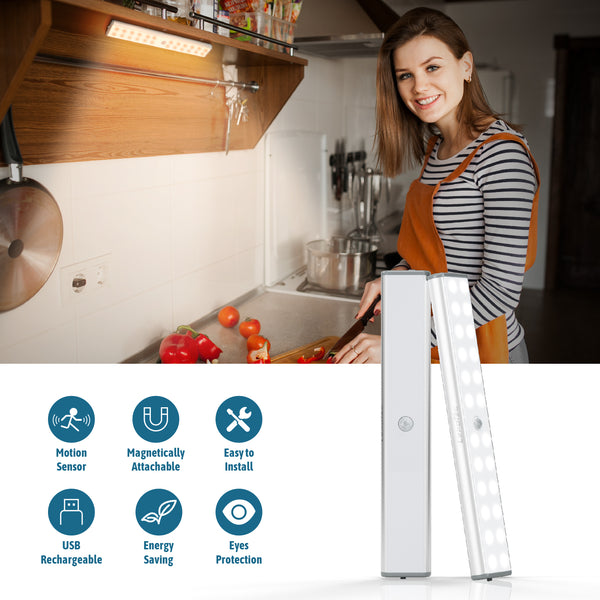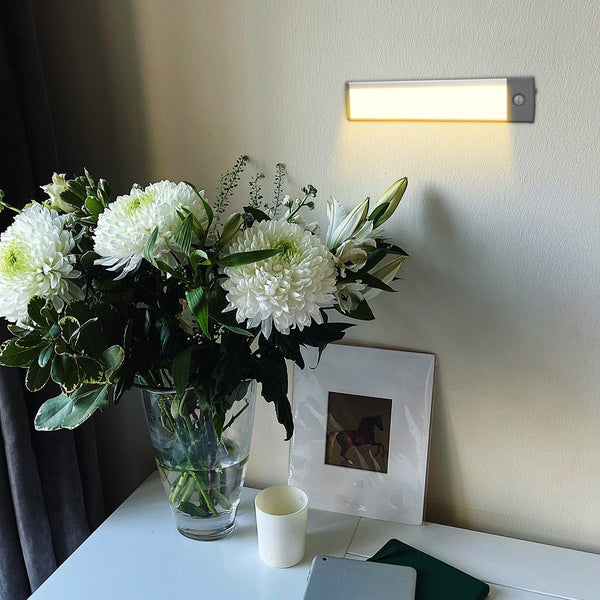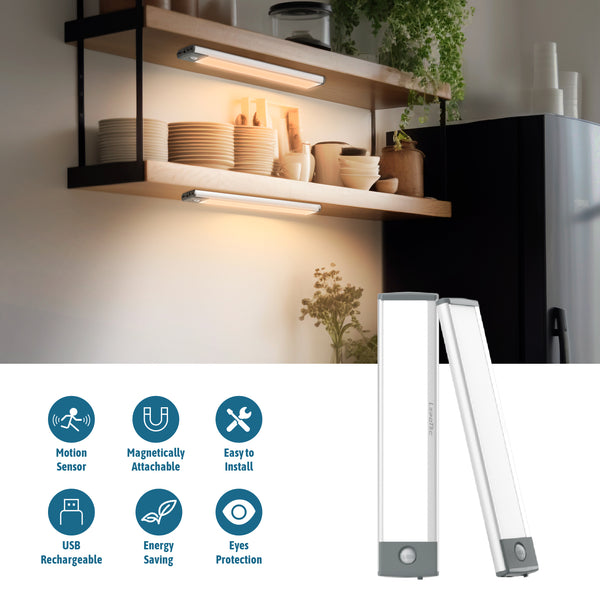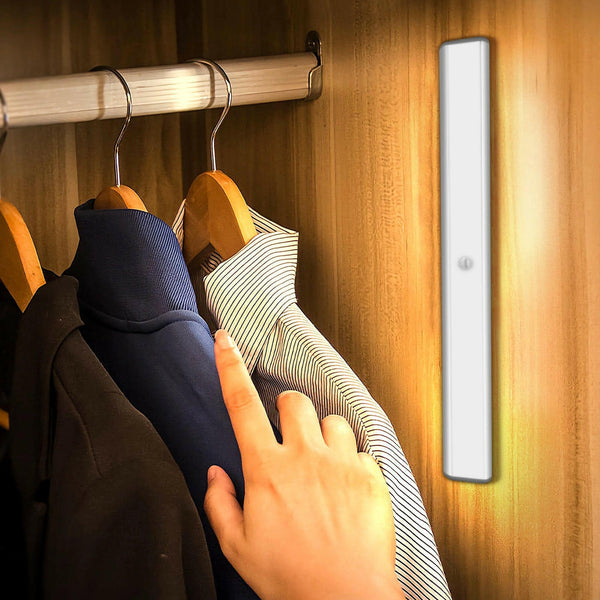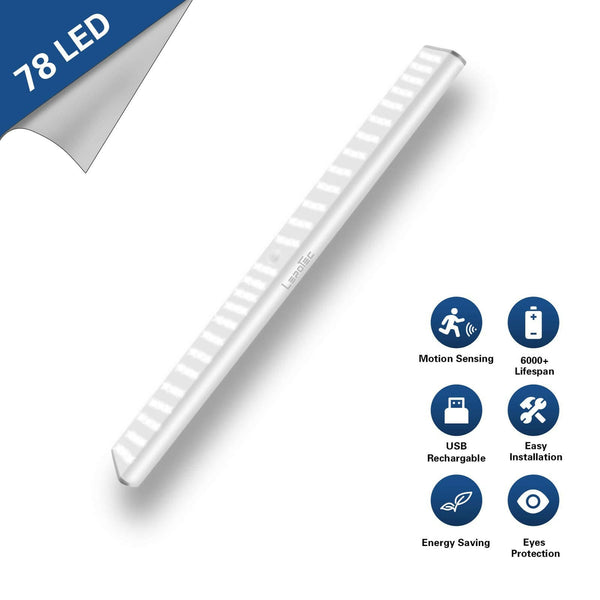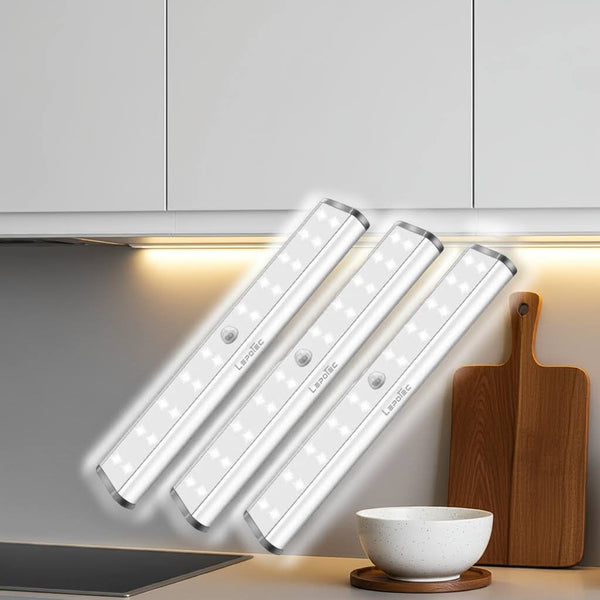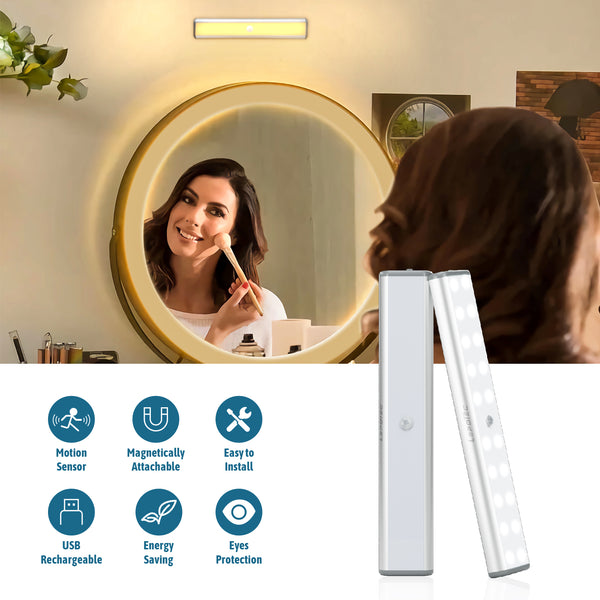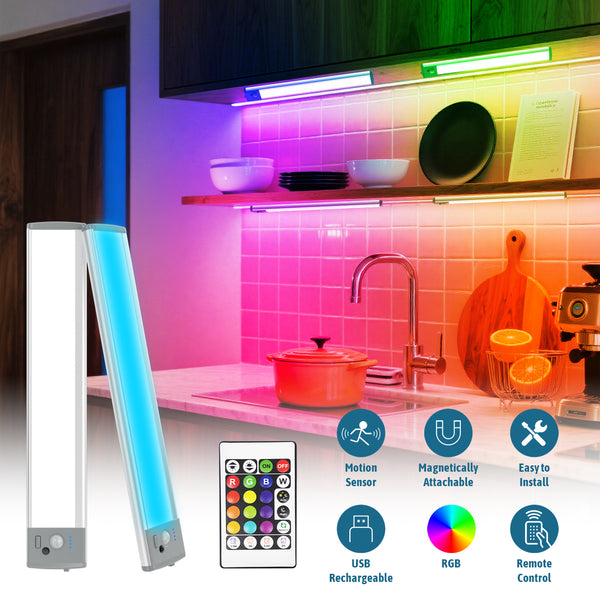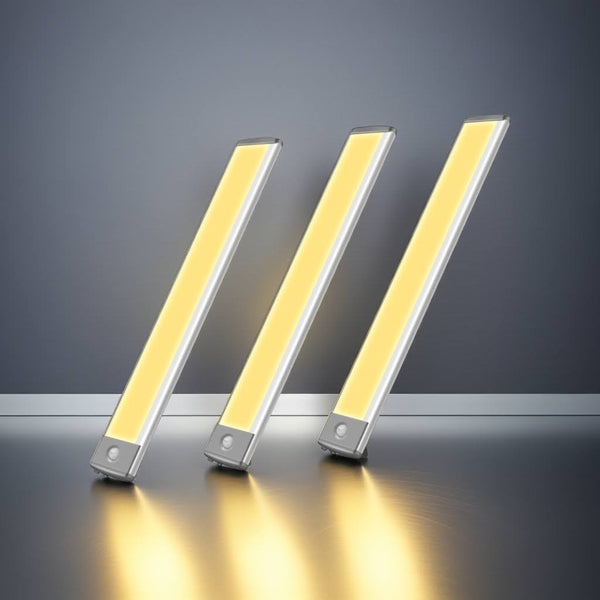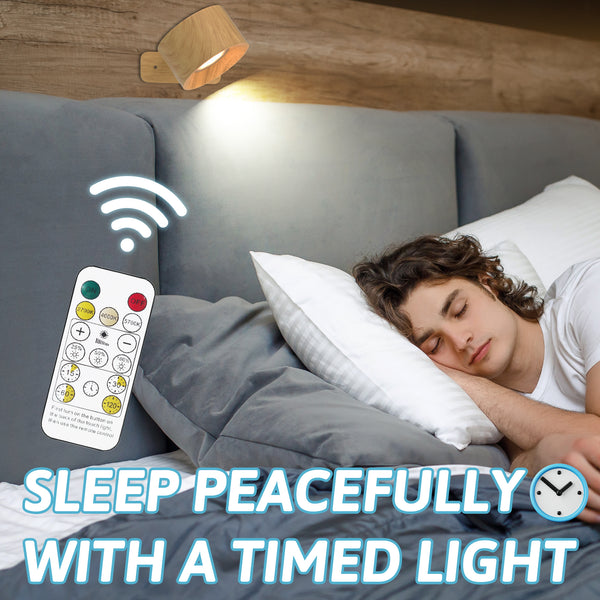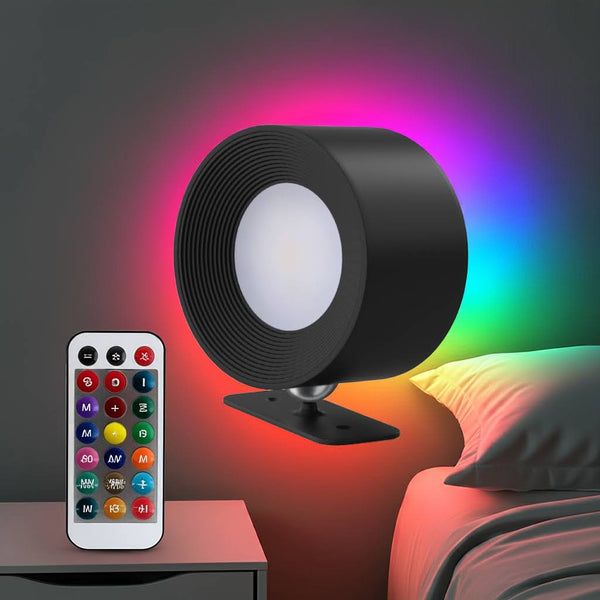In the heart of every home, the kitchen serves not only as a space for culinary creativity but also as a gathering point for family and friends. To elevate the functionality and ambiance of this essential area, the right lighting plays a crucial role. From highlighting countertops to illuminating dark corners, effective kitchen lighting can transform your cooking experience. As you explore your options, you'll discover a variety of choices, each designed to enhance both the aesthetics and practicality of your kitchen. Whether you're considering under cabinet kitchen lights for added task illumination, or intrigued by the convenience of wireless under cabinet lights, understanding the best types of kitchen lighting available is key to creating your ideal culinary sanctuary. Join us as we delve into the four best types of kitchen lighting you can buy, ensuring that your space is as bright and welcoming as it is functional.
What's the best color temperature for kitchen lighting?
When designing a kitchen, one of the most crucial considerations is the color temperature of the lighting. The perfect color temperature can set the atmosphere of the space, making it functional and inviting. For kitchens, a color temperature between 3000K and 4000K is often recommended. This range emits a warm to neutral light that mimics daylight, providing a balanced environment for cooking and socializing. The right light can enhance the colors of your culinary creations while reducing the likelihood of eye strain during extended meal preparation.
Under cabinet kitchen lights are a popular choice in contemporary kitchens, as they offer focused illumination where it matters most. These lights not only brighten work surfaces but also contribute to the overall ambiance. Utilizing a color temperature within the aforementioned range can highlight the beauty of countertops and appliances, showcasing the kitchen's design features. Whether you prefer traditional fixtures or modern wireless under cabinet lights, selecting the right temperature helps ensure that every inch of your kitchen is functional and appealing.
In addition to standard lighting, consider integrating kitchen cabinet lights to create visual depth. These lights can illuminate the insides of cabinets, making it easier to find ingredients and tools. When paired with undercabinet lighting, they provide a comprehensive solution that enhances both practicality and aesthetics. Choosing a compatible color temperature for these fixtures allows for a cohesive look, ensuring that the entire kitchen feels harmonized and inviting.
Ultimately, the best color temperature for kitchen lighting will depend on personal preference and the specific ambiance you wish to create. Aim for a blend of brightness and warmth, making sure your choices complement your kitchen's style. By thoughtfully selecting fixtures like under cabinet kitchen lights and wireless under cabinet lights, as well as incorporating kitchen cabinet lights, you can achieve a beautifully lit and highly functional culinary space.
How do you calculate how many lumens your kitchen needs?
When it comes to ensuring your kitchen is well-lit, calculating the necessary lumens is essential for creating an inviting and functional space. Lumens measure the total amount of visible light emitted by a source, and different areas of your kitchen will require varying levels of brightness. The general recommendation is to aim for around 300 to 400 lumens per square meter for general kitchen lighting. This means that if your kitchen measures 10 square meters, you should look for lighting solutions that offer a total of 3,000 to 4,000 lumens.
Consider the specific functions of different areas within your kitchen. For example, workspace such as countertops and cooking areas may benefit from direct, focused lighting. Here, you might want to incorporate kitchen cabinet lights, which can provide targeted illumination where you need it most. These lights can significantly enhance visibility while chopping vegetables or reading recipes, reducing the chances of accidents and improving overall efficiency.
Another aspect to consider is the layering of light. Combining ambient lighting with task lighting and accent lighting can help achieve a balanced illumination throughout the space. Dimmable fixtures can also be a wise choice, allowing you to adjust the intensity based on the time of day or type of activity. This flexibility not only adds functionality but also creates a warm atmosphere in the kitchen, making it a delightful place for family gatherings or quiet breakfasts.
Lastly, when selecting light fixtures, opt for energy-efficient options such as LED lights. These provide high lumen output with lower energy consumption, contributing to both sustainability and cost-effectiveness in the long run. By carefully calculating the total luminous needs for your kitchen and incorporating practical lighting solutions like kitchen cabinet lights, you can transform your culinary space into a well-lit haven that is both practical and aesthetically pleasing.
Where should I put lighting in a kitchen?
When designing the lighting for your kitchen, it’s essential to consider both functionality and aesthetics. A well-lit kitchen not only enhances the ambiance but also makes cooking and preparing meals safer and more enjoyable. One of the most effective ways to achieve this is by incorporating layered lighting, which includes ambient, task, and accent lighting. Strategically placing each type will help create a well-balanced and inviting space that meets various needs.
Task lighting should be focused on areas where activities take place, such as countertops, sinks, and cooking surfaces. This is where kitchen cabinet lights can play a significant role, particularly under the cabinets. By installing LED strips or puck lights underneath your cabinets, you provide direct illumination to your workspace, which can be invaluable when chopping vegetables or measuring ingredients. These lights can also enhance the aesthetic appeal of the kitchen by creating a welcoming glow that showcases your countertops.
Incorporating ambient lighting is equally important as it sets the overall tone of the kitchen. Ceiling-mounted fixtures, such as pendant lights or chandeliers, can provide broad light coverage while adding a stylish focal point. For kitchens with an island or breakfast bar, installing pendant lights directly above these areas can create a cozy atmosphere, ensuring that both functionality and decoration are addressed. Additionally, dimmers can offer versatility, allowing you to adjust brightness levels depending on the time of day or the mood you wish to create.
Finally, consider including accent lighting to highlight architectural features or decorative elements within the kitchen. This can be achieved through wall-mounted fixtures or lighting that frames open shelving. Such lighting draws the eye to your favorite cookbooks or beautiful dishware, contributing to the kitchen's overall design. By thoughtfully planning where to put lighting in your kitchen, including the strategic installation of kitchen cabinet lights, you can seamlessly blend utility and artistry, creating a space that is both practical and pleasing to the eye.
How far apart should recessed lights be in a kitchen?
When planning the layout of recessed lights in a kitchen, spacing is a key consideration that directly impacts both functionality and aesthetics. Generally, a good rule of thumb is to space recessed lights about two to four feet apart, depending on the specific layout and lighting needs of the kitchen. This spacing not only ensures even illumination but also helps to avoid dark spots that can make cooking and food preparation more challenging. The height of the ceiling also plays a significant role; higher ceilings may require wider spacing to adequately light the room.
In addition to general spacing guidelines, it's important to consider the placement of kitchen cabinet lights as part of the overall lighting scheme. These are crucial for illuminating countertops and enhancing the visibility of your food prep areas, making them an important complement to the recessed lights. If you're incorporating under-cabinet lighting, it should be positioned so that it fills in any gaps left by the recessed fixtures, creating a seamless and inviting atmosphere. A well-planned arrangement will enhance not just functionality but also the ambiance of the kitchen.
Another aspect to take into account is the purpose of different areas within the kitchen. For instance, areas where tasks such as chopping or reading recipes take place may require brighter lighting compared to spaces used for aesthetic purposes. This means some recessed lights may need to be spaced closer together in zones where more light is required, while other areas can have slightly wider spacing. The combination of recessed lights and under-cabinet lighting can create layers of illumination that, when thoughtfully arranged, significantly enhance the kitchen experience.
Finally, it is advisable to use dimmers with recessed lights, allowing for greater flexibility in adjusting the lighting levels based on the time of day or the specific activities occurring in the kitchen. Dimming the lights during an intimate dinner or brightening them up for a family gathering adds convenience and comfort. Balancing recessed lights with other sources of lighting, like kitchen cabinet lights and decorative fixtures, will lead to a beautifully illuminated kitchen that’s both functional and appealing.
What type of lighting is best for kitchen island?
Choosing the right lighting for your kitchen island is essential, as it not only enhances the functionality of the space but also contributes to the overall ambiance of your kitchen. Pendant lights are a popular choice for kitchen islands, offering both style and direct illumination. These fixtures can be hung at varying heights to suit the design of your kitchen, providing focused light for meal preparation and creating a visually appealing focal point. Selecting the right size and style of pendant lights can significantly impact the aesthetic, so consider complementing them with the rest of your kitchen décor for a cohesive look.
In addition to overhead lighting, kitchen cabinet light is another factor to consider when illuminating your kitchen island. Installing under-cabinet lighting can provide supplementary lighting that brightens the workspace and enhances the functionality of your kitchen. LED strips or puck lights can be an excellent choice for under-cabinet installations, ensuring that the area is well-lit while also adding a modern touch. The combination of overhead pendants and cabinet lights can create a layered lighting effect that balances both style and practicality.
Furthermore, dimmable lights offer the added advantage of adjusting the brightness according to the mood or task at hand. This flexibility is particularly useful in kitchens, where different activities may require varying levels of light. Whether you're hosting a dinner party or doing some late-night meal prep, having control over your lighting can transform the space, making it feel warm and inviting. Ultimately, the ideal lighting for your kitchen island should be a blend of functionality, style, and adaptability, ensuring the space remains a central hub of your home's activity.
In conclusion, the best lighting solution for a kitchen island combines pendant lights with strategically placed kitchen cabinet lights, all while incorporating dimmable features for versatility. This thoughtful approach to lighting can elevate the design of your kitchen while providing adequate illumination for cooking, dining, and entertaining. By investing in quality fixtures and considering the overall aesthetic of your kitchen, you can create a welcoming and efficient space that meets all your needs.
Are pendant lights going out of style?
As interior design trends continue to evolve, the question arises: are pendant lights going out of style? Historically, pendant lighting has played a versatile role in modern homes, serving both practical and aesthetic functions. These fixtures have been particularly favored in kitchen designs, where they provide essential task lighting above islands or dining areas. However, as minimalism and open spaces take precedence in current design preferences, some are beginning to question whether pendant lights are losing their place in contemporary interiors.
One aspect contributing to the potential decline of pendant lighting is the rise of under cabinet lighting. This subtle yet effective option enhances illumination while maintaining an uncluttered visual appeal. Under cabinet lighting not only accentuates the features of countertops and backsplashes but also complements an array of design styles, from rustic to sleek modernism. As homeowners increasingly focus on maximizing space and creating a cleaner look, these fixtures have become a go-to solution for achieving ambient lighting without drawing too much attention.
Despite this shift, pendant lights are unlikely to vanish entirely from the design landscape. They offer a unique opportunity to make bold design statements, whether through unique materials, colors, or shapes. Designers often use them as focal points in a room, integrating them seamlessly with other elements. Instead of becoming obsolete, pendant lighting is more likely to transform in style and application, finding a balanced coexistence with newer lighting trends like under cabinet options.
Ultimately, the fate of pendant lighting will depend on individual preferences and the specific needs of each space. While they may not dominate the market as they once did, they will likely continue to hold value for those looking for personalized decor that speaks to their style. As lighting technology advances and trends shift, pendant lights might adapt, ensuring they remain relevant in the evolving world of interior design.
What is the best size for a pendant light over kitchen island?
When it comes to designing the perfect kitchen, choosing the right pendant light over your island can significantly impact both functionality and aesthetic appeal. The size of the pendant light is crucial; it should complement the scale of the island while providing adequate illumination for tasks such as food preparation and dining. A common guideline is to select a pendant that is about one-third the width of the island to ensure balanced proportions, while also taking into consideration the height of the ceiling and the overall ambiance desired for the space.
In addition to size, the placement of the pendant light is equally important. Typically, hanging the light 30 to 36 inches above the countertop allows for optimal illumination without obstructing sightlines or creating a cramped feeling. This height ensures that the light casts an inviting glow while still being functional, creating a welcoming atmosphere for family gatherings or entertaining friends. Pairing this fixture with under cabinet lighting can enhance the overall brightness and create a layered lighting effect that is both practical and visually appealing.
The finish and style of the pendant light should harmonize with the other elements in the kitchen. Whether you prefer a sleek modern design or a rustic farmhouse feel, selecting materials that complement your cabinetry and other fixtures can tie the entire space together. Additionally, choosing a light that has adjustable features can offer versatility, allowing you to adapt the lighting based on different activities and times of day. When the pendant light is versatile and well-positioned, it transforms the kitchen island into a true centerpiece of the home.
Ultimately, the best size for a pendant light over a kitchen island is one that not only adheres to design principles but also aligns with your personal style and practical needs. By carefully considering the dimensions, placement, and surrounding elements, you can create a beautifully illuminated space that serves as both a functional work area and an inviting social hub. Coupled with effective under cabinet lighting, your kitchen will become a bright and welcoming environment for all your culinary endeavors.
Are LED lights good for kitchen?
When it comes to choosing the perfect pendant light for your kitchen island, size plays a crucial role in both aesthetics and functionality. Generally, a good rule of thumb is to select pendant lights that are about one-third the width of the island. This ensures that the light is adequately proportioned to the space, allowing it to illuminate the area effectively while creating an inviting atmosphere. For example, if your island is 6 feet wide, look for pendant lights that are around 20 inches in diameter. This proportion helps maintain a balanced visual appeal and ensures that the focal point remains on the island itself.
In addition to diameter, the height at which the pendant lights are hung also merits consideration. Typically, pendant lights should be suspended around 30 to 36 inches above the countertop. This height not only provides ample lighting for tasks but also allows for clear sightlines across the kitchen, preventing any obstruction that could hinder the natural flow of the space. If your kitchen has a high ceiling, you may need to adjust the height accordingly; however, keeping it within this general range will help achieve optimal illumination without overwhelming the area.
To enhance the overall lighting scheme in your kitchen, it’s wise to combine pendant lights with other forms of lighting, such as under cabinet lighting. Under cabinet lighting serves as a practical addition that brightens the workspace directly on the countertop, making food preparation tasks easier and safer. This layer of illumination complements the pendant lights, ensuring that your kitchen is well-lit from multiple angles. By integrating these lighting sources, you not only enhance functionality but also create a warm and inviting ambiance that is perfect for gatherings and culinary creativity.
Ultimately, selecting the right size and placement for your pendant lights, while integrating effective under cabinet lighting, contributes to a cohesive and stylish kitchen design. By ensuring that each lighting element serves a purpose and harmonizes with the others, you can craft a space that is not only visually appealing but also supremely functional—ideal for entertaining, cooking, and everyday use. Remember, the key is to strike the right balance between form and function, creating a kitchen environment that truly shines.LED lights have become increasingly popular in kitchen design due to their energy efficiency, longevity, and versatility. When it comes to illuminating one of the busiest spaces in the home, they offer a range of benefits that can enhance both functionality and ambiance. One of the most prominent advantages of LED lighting is its ability to produce bright, clear light that improves visibility, making it easier to perform tasks like chopping vegetables or reading recipes. This feature is particularly useful in kitchens where precise lighting is essential for safety and efficiency.
Another noteworthy application of LED technology in the kitchen is in under cabinet lighting. These fixtures are perfect for providing focused illumination on countertops, improving visibility in work areas without casting shadows. Under cabinet lighting can also create a beautiful visual effect, transforming an ordinary kitchen into a warm and inviting culinary haven. Additionally, LED strips and puck lights are available in various color temperatures, allowing homeowners to customize the mood of their kitchen, whether they prefer a cool white light for a modern look or a warmer hue for a cozy atmosphere.
Moreover, LED lights are an environmentally friendly option compared to traditional incandescent or halogen bulbs. They consume significantly less energy, which translates to lower electricity bills over time. This eco-conscious choice is becoming increasingly important for homeowners looking to reduce their carbon footprint. With a lifespan that often exceeds 25,000 hours, LED lights require less frequent replacements, which not only saves money but also reduces waste, making them a smart choice for sustainability-conscious individuals.
In conclusion, LED lights are an excellent option for kitchens, providing bright and efficient illumination that enhances both functionality and aesthetics. Their adaptability for different settings, especially in under cabinet lighting applications, allows for increased versatility in kitchen design. Coupled with their energy efficiency and longevity, it’s clear that incorporating LED lighting can significantly upgrade any kitchen space, making it more enjoyable to cook and entertain in.
Are warm white or cool white LEDS better for kitchen?
When it comes to choosing LED lighting for your kitchen, one of the most debated topics is whether warm white or cool white LEDs are more suitable. Each type of lighting has distinct characteristics that can greatly influence the overall atmosphere and functionality of the space. Warm white LEDs, with their softer, yellowish tones, create a cozy and inviting ambiance that can make a kitchen feel more like the heart of the home. This type of lighting is especially appealing for families and gatherings, where a warm and welcoming atmosphere is desired.
On the other hand, cool white LEDs offer a brighter, bluish light that can enhance visibility and make tasks like cooking and food preparation much easier. This type of lighting is often preferred in modern kitchens where clean lines and a sleek aesthetic are prioritized. Furthermore, cool white LEDs can help illuminate darker corners and increase the overall brightness of the space, making it feel more open and spacious. For areas like counters and islands, this can be particularly beneficial when paired with under cabinet lighting, as it ensures that food prep areas are well-lit and free from shadows.
When deciding between warm white and cool white LEDs, it's essential to consider the layout and design of your kitchen. For those who enjoy a traditional or rustic style, warm white lights complement wooden cabinetry and warm colors wonderfully. In contrast, sleek, contemporary designs may benefit from the clarity and modern feel that cool white LEDs provide. Many homeowners find that a combination of both types of lighting works best; strategically placing warm white fixtures in dining areas and cool white lights in work zones creates an ideal balance.
Ultimately, the choice between warm white and cool white LEDs will depend on personal preference and the specific needs of your kitchen. If you're looking to create a multifaceted kitchen atmosphere, combining lighting options can enhance both the practicality and aesthetic appeal of the space. Regardless of your choice, integrating elements like under cabinet lighting can serve as a practical solution that brightens work surfaces while also adding a touch of style to your kitchen’s overall design.






